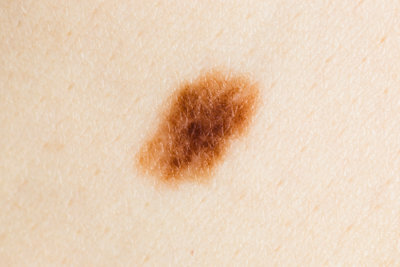Why do you get birthmarks?
Many people have dark pigmented spots on their skin. Most of these birthmarks are benign cell changes. But why one person hardly has any birthmarks and another has many is not certain. However, there is a risk that birthmarks will degenerate. In this guide, learn about the different types of moles and what to look out for.

Why do you get moles?
- Moles or birthmarks are the terms that are used colloquially for a nevus. These are benign skin tumors.
- Why you have birthmarks and your partner does not get them is not clear.
- Birthmarks in themselves are not dangerous; Under certain conditions, however, they can degenerate, so that a malignant melanoma, skin cancer, develops.
- If you are a light skinned type with light hair and eyes you are at increased risk. Because of your light skin color, you are likely to be prone to sunburns, which you should definitely avoid. In general, intensive sunbathing is also possible without it sunburn but to be avoided by fair-skinned people as the risk of developing malignant melanoma increases.
- You may also have numerous real birthmarks, the melanocytic nevi. The melanin is the pigment of the skin and determines our skin color. In a melanocytic nevus, the corresponding cells increasingly produce the dark pigment melanin, which leads to brown coloration.
- Nevus cells can also produce pigments, so that you get birthmarks.
- A third form of birthmarks are dysplastic nevi. They can develop from melanin-producing cells as well as from nevus cells. They are considered to be the precursors of malignant melanoma and you should watch them closely. Dysplastic nevi often occur if, for example, your family has previously been diagnosed with skin cancer. In addition, they are often present in large numbers. Of course, just having a dysplastic nevus doesn't mean you have skin cancer. However, the risk of developing it is increased.
If you get new moles there is no need to panic. Keep …
Birthmarks or melanoma
- If you are the type of person who gets a lot of moles, you should have your moles checked regularly.
- As part of cancer screening, you can have a dermatologist or general practitioner examine you every two years from the age of 35. Before getting skin cancer, this is a simple method of early detection that you should pursue.
- Between Investigations you should get your moles in eye keep them and check them regularly.
- Are they in places where it's hard to see, like this move or buttocks, let your partner or family member take control.
- It can be helpful to take a close-up photo of your moles. This gives you an objective comparison as to whether something has changed since the last recording.
- The first clues as to whether a birthmark is benign or malignant is its appearance. To do this, you should know the A-B-C-D-E rule.
- A stands for appearance. Has the appearance of your mole changed recently?
- B means limitation. Your birthmark should have a uniform edge. If the edge is ragged or jagged, this can be an indication.
- C stands for color. The color of the mole is also important. Birthmarks that consist of several shades of brown or black are considered suspicious.
- The diameter (D) should not exceed five millimeters.
- E for sublimity. Stroke the birthmark. The birthmark should not be raised so that you can feel it above the level of the skin.
If this rule applies, see a dermatologist.
How helpful do you find this article?
The content of the pages of www.helpster.de was created with the greatest care and to the best of our knowledge and belief. However, no guarantee can be given for the correctness and completeness. For this reason, any liability for possible damage in connection with the use of the information offered is excluded. Information and articles must under no circumstances be viewed as a substitute for professional advice and / or treatment by trained and recognized doctors. The content of www.helpster.de cannot and must not be used to make independent diagnoses or to start treatments.


